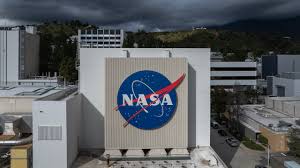NASA’s Jet Propulsion Laboratory (JPL) has revealed plans to lay off nearly 550 employees as part of a major restructuring effort aimed at streamlining operations and focusing resources on key mission priorities.
Aligning Resources with Mission Goals
Operated by the California Institute of Technology (Caltech), JPL manages several of NASA’s flagship programs, including Mars rovers, Europa Clipper, and lunar initiatives under the Artemis program. According to JPL leadership, the layoffs will affect a mix of technical and administrative staff, representing roughly 8% of the lab’s total workforce.
JPL Director Laurie Leshin described the decision as “extremely difficult but necessary to ensure the long-term sustainability of the lab’s mission portfolio.” She emphasized the importance of concentrating resources on projects critical to NASA’s current and future objectives.
Context and Challenges
The restructuring comes amid budgetary pressures and shifting program priorities. Earlier in 2025, NASA delayed elements of the Mars Sample Return mission due to rising costs and technical hurdles. JPL management stressed that, despite workforce reductions, the lab remains committed to planetary science, robotics, and space technology innovation.
Support for Affected Employees
Employees impacted by the layoffs will receive severance packages and career transition assistance. Both Caltech and NASA expressed appreciation for their contributions to decades of scientific achievements, highlighting the workforce’s integral role in JPL’s global reputation for excellence.
Mission Continuity
Despite the cuts, NASA confirmed that major projects like Europa Clipper, set for launch in 2026, and ongoing planning for the Mars Sample Return mission will continue without disruption. The restructuring is intended to create a leaner, more agile operational model capable of sustaining long-term innovation in robotic and human space exploration.
Conclusion
The JPL workforce reduction underscores the challenges facing major research institutions in balancing ambitious exploration goals with fiscal realities. By realigning resources and focusing on high-priority missions, NASA aims to position JPL for continued leadership in space science and technology in the coming decades.

